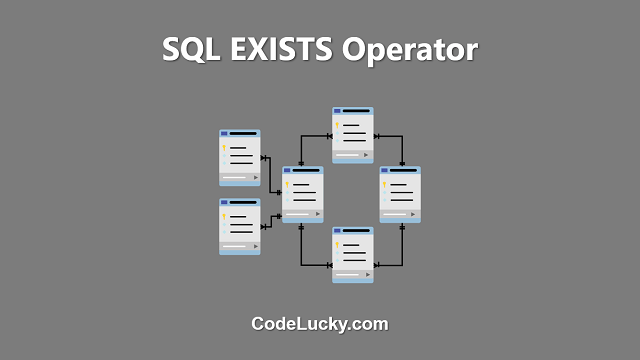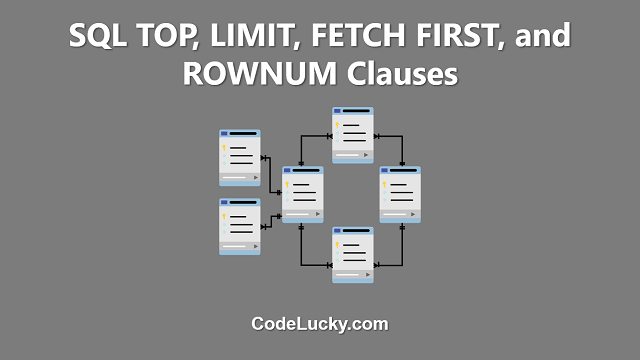The EXISTS operator in SQL is a Boolean operator that is used to test for the existence of any rows in a subquery. The subquery is executed first, and the result of the subquery is used to determine if the EXISTS operator returns a “TRUE” or “FALSE” value. The EXISTS operator is used to optimize the performance of the query, as it stops the execution of the subquery as soon as the first matching row is found, rather than continuing to execute the subquery until all rows have been checked.
Syntax of SQL EXISTS Operator
SELECT column1, column2, ... FROM table1 WHERE EXISTS (SELECT column_name FROM table2 WHERE condition);
In the above syntax, the “column1”, “column2”, etc. represent the columns to be retrieved from table1. The subquery is defined within the parentheses after the EXISTS keyword, and it returns the columns specified by the “column_name”. The subquery must return at least one row for the EXISTS operator to return a “TRUE” value, and if no rows are returned, the EXISTS operator returns a “FALSE” value. The “WHERE” clause is used to filter the rows returned by the subquery based on a specified condition.
Example of SQL EXISTS Operator
Consider the following two tables, “customers” and “orders”:
| CustomerID | CustomerName |
|---|---|
| C001 | John Doe |
| C002 | Jane Doe |
| C003 | Bob Smith |
| OrderID | CustomerID | ProductID | Quantity |
|---|---|---|---|
| O001 | C001 | P001 | 2 |
| O002 | C002 | P002 | 3 |
| O003 | C001 | P002 | 1 |
Now, if we want to find the names of all customers who have placed an order, we can use the following SQL statement with the EXISTS operator:
SELECT CustomerName FROM customers WHERE EXISTS (SELECT * FROM orders WHERE customers.CustomerID =orders.CustomerID);
The result of this query will be:
| CustomerName |
|---|
| John Doe |
| Jane Doe |
As you can see, only the names of customers who have placed an order (i.e., have a matching CustomerID in the “orders” table) are returned by the query. This is because the EXISTS operator returns a “TRUE” value only if at least one row is returned by the subquery, and only the matching rows are returned in the main query.
NOT EXISTS Operator
The NOT EXISTS operator is used to find the records that do not have a corresponding record in the subquery. The NOT EXISTS operator returns a “TRUE” value if no rows are returned by the subquery, and a “FALSE” value if at least one row is returned. The syntax for the NOT EXISTS operator is the same as for the EXISTS operator, except that the keyword “NOT” is added before the word “EXISTS”.
Example of NOT EXISTS Operator
Consider the same two tables as in the previous example: “customers” and “orders”. If we want to find the names of customers who have not placed an order, we can use the following SQL statement with the NOT EXISTS operator:
SELECT CustomerName FROM customers WHERE NOT EXISTS (SELECT * FROM orders WHERE customers.CustomerID = orders.CustomerID);
The result of this query will be:
| CustomerName |
|---|
| Bob Smith |
As you can see, only the name of the customer who has not placed an order (i.e., does not have a matching CustomerID in the “orders” table) is returned by the query. This is because the NOT EXISTS operator returns a “TRUE” value only if no rows are returned by the subquery, and only the non-matching rows are returned in the main query.
Conclusion
In conclusion, the EXISTS and NOT EXISTS operators in SQL are powerful tools for testing the existence of records in a subquery. These operators can be used to optimize the performance of a query and return only the relevant data. Whether you are a beginner or an experienced SQL developer, understanding how to use these operators is an important aspect of writing efficient and effective SQL queries.







